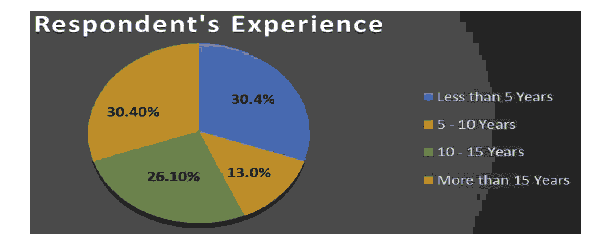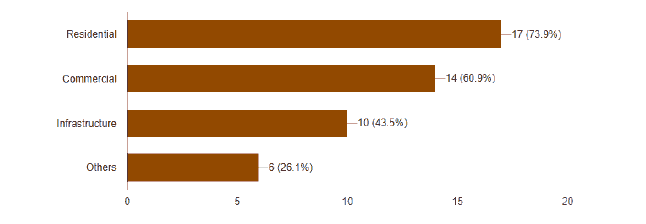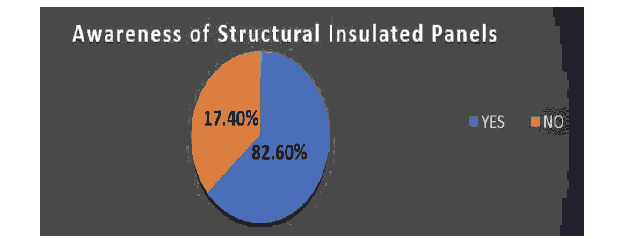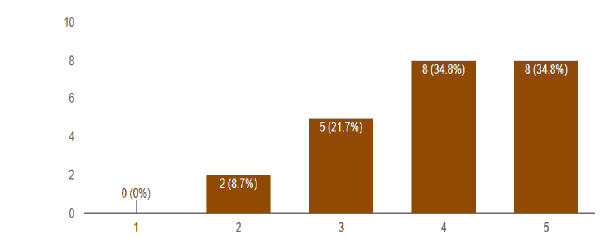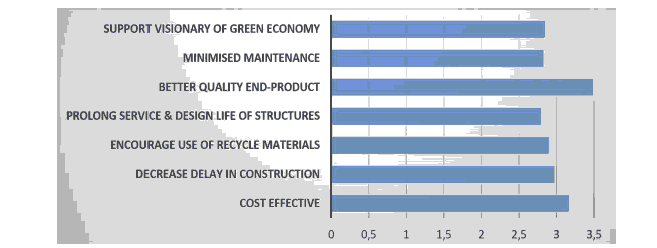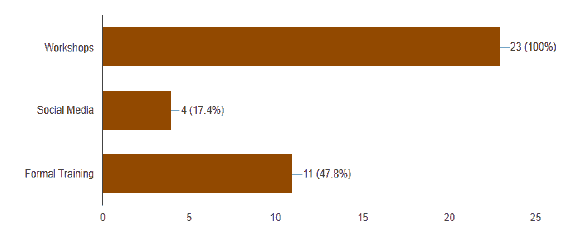Review Article: 2021 Vol: 24 Issue: 1S
A Feasibility Study on Customer Satisfaction Management on use of Structural Insulated Panels in Construction Industry
Panjehpour, INTI International University
Shahryar Sorooshian, University of Gothenburg
Deepak TJ, Manipal International University
Abstract
Marketing strategy plays a significant role in construction industry. However, it depends on the rapid construction of buildings which is an advantage for customer satisfaction. Structural insulated panel (SIP) is a viable solution as a component of prefabricated house, particularly for wall and floor systems. This research focuses on the feasibility of SIP by scrutinising the significant parameters associated with the use of SIP in pre-, during and post-construction phases by seeking the view of industrial managers. The parameters discussed in this paper are cost, quality, recycled materials, construction time and maintenance. A survey was conducted through a questionnaire distributed among construction policy makers and industrial managers in two sections of demographics of respondents and technical aspects of use of SIP in the construction industry. A descriptive statistics method was adopted for presenting quantitative descriptions in forms of chart and histogram. The survey results indicate a remarkable demand for SIP in the construction industry and the need for conducting workshop as the effective ways of raising awareness among construction professionals on recent advancements of structural insulated panel in order to satisfy the construction strategic management.
Keywords:
Customer Satisfaction, Strategic Management, Structural Insulated Panel (SIP)
Citation Information:
Panjehpour, Sorooshian, S., Deepak, T.J. (2021). A feasibility study on customer satisfaction management on use of structural insulated panels in construction industry, Journal of Management Information and Decision Sciences, 24(S1), 1-6.
Introduction
Rapid construction of buildings has always been crucial for marketing management team. Considering the final cost of today’s complex building which is significantly governed by the time of completion of building, delay of project mainly affects customer satisfaction. To overcome this issue, the new methods of construction such as prefabrication are required in favour of those of traditional. Therefore, timeframe and cost are two dependent factors which must be included in strategic planning by marketing management (Castillo-Abdul, 2021) and technical teams of buildings. Prefabricated house is a vital solution as it is factory-made using off-site technology and can be easily transported and assembled on site (Anson JMK, 2002; Panjehpour, 2013; Smith, 2011).
The design of prefabricated structural insulated panel (SIP) is a key into developing prefab home (Anna Walsh, 2020; Panjehpour, 2018). SIP can reduce projects construction time and budget in a mass production due to its light weight and higher compressive strength than traditional building wall and floor (Brown, 2011; Panjehpour, 2013; Yeoshua, 2009). SIP is a type of sandwich panel which is labour-intensive and energy-efficient and improves the sustainability of building (Akay, 1990; Brown, 2011; Dharmasena, 2011; Anson JMK, 2002; Panjehpour, 2013). The common issues regarding design of SIP are bearing loads in vertical and lateral directions and also the types of static and dynamic load (Frostig, 2011; Miller, 2010; Rammer & Williamson, 2020). The lateral load is important for high rise buildings as the wind load increases with height (Borjen Yeh, 2019). This research aims to investigate the viability of using SIPs in building construction as wall and floor to replace the time-consuming traditional methods. This feasibility study focuses on SIP application as precast wall-floor system and provides various data collected through a survey using quantitative method.
Types of Data Collected
A computer-aided survey was conducted with questionnaires in two sections, namely section A and section B. Section A collects demographic information about the background of the respondents which are type of organisation, job position, work experience, gender and type of project. Section B contains respondents’ view on factors associated with implementation of SIP in the construction industry and ways of raising awareness about SIP among construction professionals. The respondents had limited choices of answers when they received the close-ended questions. There were two types of questions; multiple-choice style and Yes / No style. The respondents were contractors, consultants, civil engineers, architects and project managers and the sample size was 250.
Data Analysis
The data is analysed in sections A and B for demographics and structural insulated panel respectively. The data was collected via Google Form and was analysed using Microsoft Excel. The data analysis was conducted using charts and histograms derived from descriptive statistics and mean score (MS) methods. Data collected from section B was analysed using mean score method based on Likert scale, as it is formulated in equation 1. Lower mean score indicates efficiency of SIP panels in favour of traditional building methods.

The selection criterion for the descriptive statistics method was to provide quantitative descriptions in forms of chart and histogram.
Survey Results
Results are presented with two sub-secions which are demographics and structural insulated panels.
Section A – Demographics
The respondents were 52.2% from contractors and 47.8% from consultancy firms. Therefore, the contractors’ portion is slightly greater than that of consultancy firms’. 56% of respondents were male while the remaining 44% were female. The Respondent’s current position, years of experience and types of project they are involved are shown in Figures 1-3 respectively.
Section B – Structural Insulated Panels
The feasibility of implementation of SIP in buildings and its effect on building marketing management as well as customer satisfaction were the key parts of the designed questionnaire to seek the opinion of the respondents. The descriptive statistics method was adopted for data analysis. The respondent’s awareness of SIP is shown in Figure 4. In addition, the percentage of respondents with replacement of traditional wall and floor with SIP in 5 levels of strongly disagree, disagree, neutral, agree and strongly agree are shown in a bar graph in Figure 5.
Two approaches were considered through the questionnaire. The former was through the various parameters affecting the implementation of SIP in the building industry which were scrutinised in order to highlight the effectiveness of SIP. The scale of the response was set from 1 to 5. The rate 1 indicates the least influencing and that of 5 is the most. The respondent provided their response and rated the results from 1 to 5.
The mean score data analysis tool was adopted for analysis. The lower mean score indicates higher effectiveness of SIP over traditional building methods. The graph in Figure 6 shows the effectiveness of SIP in favour of traditional wall and floor system. This is because SIP provides many advantages and will consequently has positive effects on the cost and timeframe of building.
The latter was through the ways to raise awareness. The questionnaire was utilised to seek some ways to increase the knowledge of building experts on recent advancements of SIP. Figure 7. illustrates the workshops as the most effective way and subsequently the formal trainings.
Figure 7: Bar Charts Illustrating the Best Ways to Increase the Awareness of Building Professionals on SIP
Conclusion
The building customer satisfaction and marketing policies are largely affected by the cost and timeframe when building is completed. SIP is introduced as a solution in this article to be replaced with traditional wall and floor systems. The effectiveness of the SIP is largely governed by its design and materials. SIP as a prefabricated structural element of building accelerates the construction process and increases labour-savingness. This would significantly help the marketing management. The off-technology used for prefabricating SIP would largely help reducing wasted materials compared to traditional wall and floor system. This would help the health and care management. SIP remarkably helps the cost-saving of construction building despite its materials are more expensive than traditional wall and floor system. This is because of its mass production in factory. In mass production, the materials are purchased in bulk and consequently with a less price. Regarding the quality control issues, SIP can satisfy the customers as it is produced in factory. This is because the SIP production is standardised at factory under the supervision of engineers. This research also concludes the need for workshops and formal trainings as ways of increasing the awareness of construction professionals on the application and recent developments of SIP.
Acknowledgment
The authors appreciate the scientific support from the Centre for Advanced Concrete Technology (CACT) at INTI International University.
References
- Akay, M., & Hanna, R. (1990). A comparison of honeycomb-core and foam-core carbon-fibre/epoxy sandwich panels. Composites, 21, 325-331.
- Anna, W.B. (2020). Assessing structural insulated panels. Building materials.
- Borjen, Y.T.S., Xiping, W., & Tom, W. (2019). Lateral load performance of structural insulated panel (SIP) Diaphragms.
- Brown, M., & Hurst, T. (2011). Structural insulated panel system (United States Patent No).
- Castillo-Abdul, B. (2021). Evolution of fashion marketing and communication: Systematic literature review. Academy of Strategic Management Journal, 20(2).
- Dharmasena, K.P., Wadley, H.N.G., Williams, K., Xue, Z., & Hutchinson, J.W. (2011). Response of metallic pyramidal lattice core sandwich panels to high intensity impulsive loading in air. International Journal of Impact Engineering, 38, 75-289.
- Frostig, Y., & Thomsen, O.T. (2011). Non-linear thermo-mechanical behaviour of delaminated curved sandwich panels with a compliant core. International Journal of Solids and Structures, 48, 2218-2237.
- Anson J.M.K.L.E.M. (2002). Howes R. industrialized housing construction - The UK experience. Advances in Building Technology, 23, 383-389-.
- Miller, D., Lewis, C., Mercuri, R.I.A. ( 2010). Carbon foam structural insulated panel (United States Patent No).
- Panjehpour, Y.L.V. (2013). Structural insulated panels: Past, present, and future. Journal of Engineering, Project, and Production Management, 3(1), 2-8.
- Panjehpourl. (2013). A review of prefab home and relevant issues. Construcţii, 1.
- Panjehpour, E.L., Deepak, T.J. (2018). Structural insulated panels: State-of-the-art. Trends in civil Engineering and its architecture, 3(1).
- Smith, R.E. (2011). Prefab architecture: A guide to modular design and construction. John Wiley and Sons.
- Yeoshua, F. (2009). Elastica of sandwich panels with a transversely flexible core - A high-order theory approach. International Journal of Solids and Structures, 46, 2043-2059.

